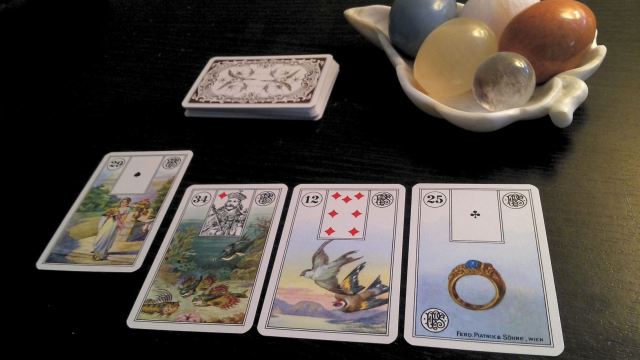The popularity of Lenormand cards seem to have been revived for contemporary times, at least here in the U.S. Lately it seems that every tarot enthusiast will go through a phase of intrigue for these Lenormands. Well the other day a student asked me to guide her studies of the Lenormands. From there, I decided to write this nutshell summary. For the tarot enthusiast who has now suddenly taken on an interest in Lenormand cards, this post will serve as an introduction.
Overview
They’re oracle cards, not tarot, and generally speaking, they’re sub-divided into 2 kinds: the Petit Lenormand, with 36 cards total, which is the more popular version here in the U.S., and the Grand Jeu Lenormand, with 54 cards. I have not yet dabbled with the Grand Jeu Lenormand due to difficulties in getting a deck where I live (that is, for an economically reasonable price…because, sure, you can buy anything via the Internet these days), so I’ll focus on the Petit Lenormand only.
The oracle cards are named after Marie Anne Lenormand, who is considered one of the greatest and most influential French cartomancers of all time. However, the cards were not conceived by her. They were conceived after her death and may or may not have even been based on any of the cards used by Marie Anne Lenormand. They’re called “Lenormand cards” pretty much for marketing purposes. In fact, they may not even be French. Johann Kaspar Hechtel, a German businessman and factory owner, is credited with designing the Petit Lenormand cartomancy deck, initially as a parlour game called “The Game of Hope.” So in many ways, the name “Lenormand cards” might be a bit misleading.
Continue reading “The Lenormand: Nutshell Summary of the Petite Lenormand, from History to Practice”

